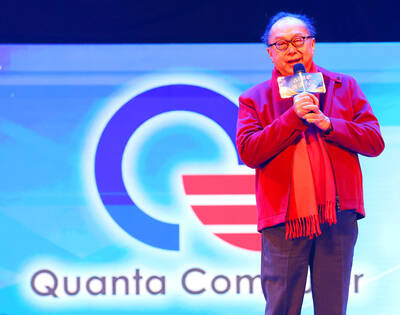The New Taiwan (NT) dollar yesterday fell to a three-year low against the US dollar on speculation the central bank stepped up intervention to weaken the local currency and safeguard exports after the yen tumbled.
Japan’s exchange rate dropped 0.8 percent to a seven-year low on speculation Japanese Prime Minister Shinzo Abe might delay a planned sales-tax increase, while South Korea’s won declined 0.6 percent.
Taiwanese electronics exporters compete against South Korean and Japanese companies in international markets.
The NT dollar closed down NT$0.111, or 0.4 percent, at NT$30.717 against its US counterpart, Taipei Forex Inc prices showed.
Turnover totaled US$516 million during the trading session, down from US$689 million the previous session.
The NT dollar earlier yesterday touched NT$30.720, the weakest since Oct. 4, 2011.
The local currency slipped 0.5 percent in the last half hour of trading, compared with an average 0.2 percent drop this year.
The central bank has sold the NT dollar in the run-up to the close on most days since March 2012, according to traders who asked not to be identified.
The central bank’s move on Monday erased the NT dollar’s gains of NT$0.11.
Dealers said that as long as other regional currencies such as the yen and won continue to trend lower, buying by the local central bank to bolster the greenback is likely to continue.
“The yen depreciating has led to the won falling, so there’s no reason why Taiwan’s dollar wouldn’t also weaken,” Taipei-based Uni-President Assets Management Corp (統一投信) fund manager Samson Tu (涂韶鈺) said.
A planned trade pact between China and South Korea would put further pressure on Taiwanese exporters, Tu said.
The China-South Korea free-trade agreement would directly impact several of Taiwan’s industrial sectors, including steel, machine tools, automobiles, displays, petrochemicals, textiles and glass, he added.
On Monday, the Ministry of Economic Affairs said the deal would cost Taiwan between NT$260 billion and NT$650 billion (US$8.5 billion and US$21.25 billion) over time, adding that this would lead to a 0.5 percent drop in GDP, a 1.34 percent fall in exports and a US$8.9 billion loss in overall output value.
Additional reporting by CNA

Intel Corp chief executive officer Lip-Bu Tan (陳立武) is expected to meet with Taiwanese suppliers next month in conjunction with the opening of the Computex Taipei trade show, supply chain sources said on Monday. The visit, the first for Tan to Taiwan since assuming his new post last month, would be aimed at enhancing Intel’s ties with suppliers in Taiwan as he attempts to help turn around the struggling US chipmaker, the sources said. Tan is to hold a banquet to celebrate Intel’s 40-year presence in Taiwan before Computex opens on May 20 and invite dozens of Taiwanese suppliers to exchange views

Application-specific integrated circuit designer Faraday Technology Corp (智原) yesterday said that although revenue this quarter would decline 30 percent from last quarter, it retained its full-year forecast of revenue growth of 100 percent. The company attributed the quarterly drop to a slowdown in customers’ production of chips using Faraday’s advanced packaging technology. The company is still confident about its revenue growth this year, given its strong “design-win” — or the projects it won to help customers design their chips, Faraday president Steve Wang (王國雍) told an online earnings conference. “The design-win this year is better than we expected. We believe we will win

Quanta Computer Inc (廣達) chairman Barry Lam (林百里) is expected to share his views about the artificial intelligence (AI) industry’s prospects during his speech at the company’s 37th anniversary ceremony, as AI servers have become a new growth engine for the equipment manufacturing service provider. Lam’s speech is much anticipated, as Quanta has risen as one of the world’s major AI server suppliers. The company reported a 30 percent year-on-year growth in consolidated revenue to NT$1.41 trillion (US$43.35 billion) last year, thanks to fast-growing demand for servers, especially those with AI capabilities. The company told investors in November last year that

Power supply and electronic components maker Delta Electronics Inc (台達電) yesterday said it plans to ship its new 1 megawatt charging systems for electric trucks and buses in the first half of next year at the earliest. The new charging piles, which deliver up to 1 megawatt of charging power, are designed for heavy-duty electric vehicles, and support a maximum current of 1,500 amperes and output of 1,250 volts, Delta said in a news release. “If everything goes smoothly, we could begin shipping those new charging systems as early as in the first half of next year,” a company official said. The new